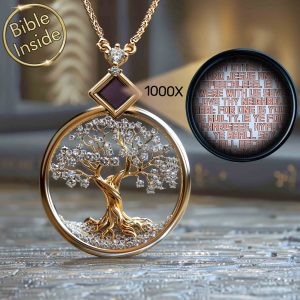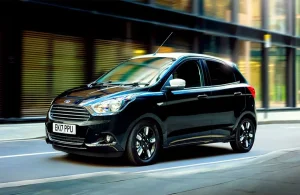A brief history of workwear – from function to fashion

Workwear has come a long way since the days of the industrial revolution, and even before. From basic metal and leather protection for specialist trades like blacksmithing and stone masonry, through to today’s functional and fashionable workwear. And through that journey, workwear has even influenced general fashion – think about it – who doesn’t own a pair of denim jeans? But more on that later.
The first workwear was probably for military purposes – functional but not very comfortable, Personal Protective Equipment (also known as armour) intended to prevent you losing a limb from a sword, being stuck with a spear or being struck with an arrow. Of course, personal protective clothing and gear is still critical in the armed services but is highly specialised and not something we associate with everyday trades and outdoor working.
Beyond protecting yourself from some sabre-wielding maniac, the earliest forms of specialized workwear were associated with specific trades – blacksmithing, stone-masonry, carpentry, glass manufacture and the like, and generally comprised specialised leather protection such as aprons and gloves to prevent injury from sharp or hot tools and products.
However, the broader concept of workwear really started to take off during the industrial revolution with the emergence of groups that took an interest in the welfare of often vulnerable, young and easily exploited workers transplanted from rural, agricultural lifestyles to urban living, working in often oppressive circumstances in factories and sweatshops throughout Europe and the US, in particular.
One of the earliest forays into mass-produced workwear was Levi Strauss and Jacob Davis’s patented “waist overalls”, or denim jeans, sporting copper rivets at key joins to minimise the likelihood of the pants ripping at the seams during hard manual labour. First produced in the early 1870s, denim jeans soon became the pants of choice for workers in America’s west – originally focused on miners, they quickly were taken up in all types of manual work, from farms to factory – eventually to become probably the most commonly worn casual pants worldwide.
As an interesting aside, the word denim reputedly derives from the name of a French fabric “serge de Nimes” first manufactured in the 1600s.
Jeans continued to evolve and were soon complemented with denim, or jeans, jackets (first called blouses) and denim overalls, with the hard-wearing fabric, and clothes made from it, coming to symbolise American ideals of hard work, resilience and innovation.
Denim workwear became a uniform of sorts for manual workers in the US. But of course, it wasn’t the first instance of this. In Britain, from the mid-19th century, manual workers (known as navies) routinely wore a standardised kind of workwear comprising flat caps, corduroy pants, heavy boots and hard-wearing jackets along with a coloured neck kerchief to soak up the sweat. Often the jacket featured leather shoulder patches to prevent wear from shouldering a shovel or pick and variations of this basic “uniform” appeared in factories, with secured pant cuffs and collarless shirts to prevent being caught in moving machinery.
Similarly, sailors, fishermen and dock workers wore specific clothes, including oilskins coats and hats, while loggers had developed a unique “style” which included fleece insulated jackets with a distinctive plaid pattern, along with waterproof boots. Other occupation specific workwear applied to rail workers and truckers, amongst others.
The rapid industrial and manufacturing expansion through the first half of the 20th century brought with it a growth in worker representation, with the health and safety of factory and manual workers becoming a foremost consideration. Along with this came a focus on providing workers with appropriate workplace clothing that was safe, fit for purpose and, most importantly, comfortable. This was coincidental with the emerging concepts of brand and a desire to outfit employees with a “corporate” uniform.
Coming into and emerging out of World War II this became an increasingly important theme. Two other trends started around this time.
The first was the development of the need for workwear designed specifically for women – made necessary by the essential drafting of women into many traditionally male dominated professions during the war years – famously represented by Rosie the Riveter.
The second trend was the emergence of workwear as fashion – starting with, of course, jeans.
In fact, workwear has become a routine inspiration for fashion, particularly for some cultural sub-groups, particularly since the 1980s – for example Doc Martens and denim or leather jackets for British punk groups.
One fashion writer has gone as far as suggesting that there are five distinctive workwear garments that have transformed fashion in the past 40 years: Overalls, jeans, denim jackets, French chore jackets (or bleu de travail) and Japanese noragi.
https://www.grailed.com/drycleanonly/workwear-fashion-impact
With the emergence of stricter and more rigorous workplace health and safety laws from the 1990s in particular, workwear has evolved more rapidly and with an increasing focus on safety, comfort and task suitability. This has included the coining of the term “Personal Protective Equipment”, which includes clothing, eyewear, protective headwear, footwear and a range of other accessories designed to minimise the likelihood of manual workers and tradies getting injured, while also being comfortable and, dare it be said, fashionable in its own right.
Workwear has evolved a long way from leather aprons, metal chest guards and gauntlets. Today, regardless of your occupation, body shape or gender, you can get high quality, fit for purpose, hard wearing, comfortable and good looking workwear that will keep you safe on the job and looking professional. And BAD Workwear stocks the best quality contemporary workwear on the market to make sure you’re fully equipped to get on with the job safely.








